#house of blois
Explore tagged Tumblr posts
Text










Medieval Women Week || Favorite non-Queen or Queen-adjacent royal woman ↬ Adèle de Normandie
Though not beyond criticism, Adela generally received unalloyed praise from her male contemporaries for her deeds as countess of Blois, Chartres, and Meaux. For more than thirty years she worked, both alongside and apart from her husband, to enhance the authority and relative autonomy of the Thibaudian counts in their widespread domains, reacting astutely to events beyond her control while adroitly manipulating the lordly prerogatives at her disposal. She was one lay prince competing against neighboring lords as she strove to fulfill comital obligations to the French kings and her duty to enforce peace and justice in her husband’s share of the Thibaudians’ domains. Yet two features distinguished the countess of Blois from her male peers: she was not trained in armed combat, and she was expected to behave in ways thought appropriate to all lay women in the world. She masterfully compensated for any potential disability in those regards by deploying her wealth and diplomatic skills to assure the loyalty and service of powerful fighting men and to cultivate unarmed but influential churchmen. Because she carefully fostered familial and feudal relationships alongside her studied assertion of princely prerogatives, Adela secured futures for her children appropriate to their status and abilities, and she assured that her son Thibaud, poised to receive Troyes as well as Blois, would inherit domains with relatively stable borders that were both more administratively-cohesive and more economically-productive than his father had inherited before him. Adela’s manifold achievements, much vaunted by her contemporaries, fully deserve modern historians’ respect. — Adela of Blois: Countess and Lord by Kimberly A. LoPrete
#medievalwomenweek#adela of normandy#house of normandy#house of blois#french history#english history#european history#women's history#history#medieval#nanshe's graphics
27 notes
·
View notes
Text

Portrait of King Theobald I of Navarre (1201-1253), Count of Champagne as Theobald IV.
He was famous as a trouvère, and was the first Frenchman to rule Navarre.
#monarquía española#reyes de españa#reyes de navarra#reino de navarra#teobaldo I#conde de champaña#casa de champaña#champaña#Thibaud Ier de Navarre#roi de navarre#vive le roi#royaume de navarre#Thibaud IV de Champagne#comte de champagne#maison de champagne#champagne#maison de blois champagne#blois#Thibaud le Chansonnier#comté de champagne#kingdom of navarre#king of navarre#count of champagne#king teobald i#theobald the posthumous#house of blois#engraving#rey de navarra#engravings
2 notes
·
View notes
Text
i'm a history nerd with an interest in royal history, sooooo
i know that England & Scotland didn't became Great Britain/the United Kingdom till the end of the Stuart era, but i wanna focus on the houses of england and (except for house of denmark) only england
#english royal family#english royal history#royal history#house of wessex#king of england#kings of england#queens of england#queen of england#house of denmark#house of godwin#house of normandy#house of blois#house of anjou#house of plantagenet#house of york#house of lancaster#house of tudor#house wessex#house denmark#house godwin#house normandy#normandy#house plantagenet#plantagent#house york#house anjou#house tudor#house lancaster#tudors#history poll
1 note
·
View note
Text
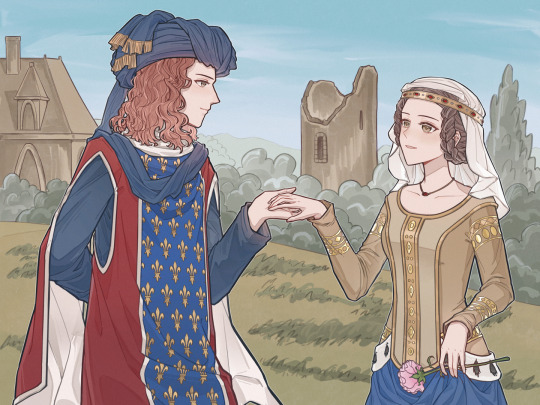
Thanks @hilda-dewitt for this great piece of work depicting Louis I of Anjou and Marie of Blois, great-grandparents of Margaret of Anjou. Louis I of Anjou was the founder of the Angevin cadet branch of the House of Valois, and Marie of Blois was the first of a series of powerful women in the House of Valois-Anjou.
I really found their story to be full of fun and drama. After King John II of France was taken prisoner in the Battle of Poitiers, Louis broke the Aragonese marriage contract arranged by his father to marry Marie, the daughter of one major claimant to the ducal throne of Brittany, neighboring his appanage of Anjou. His desire to meet his wife pushed him to end his hostage career in England prematurely on his own, and more or less led to the decision of John II to return to captivity, lol. While Marie's father fell in battle six months after John the Good's death in London, the couple remained close and intimate throughout their lives. Louis served as a leading military commander in his elder brother Charles V's reconquest of southwestern France during the second phase of the Hundred Years' War. He was also a loyal friend and protector of Bertrand du Guesclin, who fought for Marie's father before entering service for the Valois. However, due to his role in the 1378 tax revolts and his overambitious claim to the throne of Naples, Louis remained a controversial figure in France, and his past accomplishments were little appreciated. After Louis's death in the unsuccessful march to Naples, Marie continued their quest for the Neapolitan crown, and, after a tough fight against opposing claimants, secured for their seven-year-old son Louis II the County of Provence, which was in a personal union with the Kingdom of Naples. She acted as regent for Louis II during his minority, and arranged the marriage between him and Yolande of Aragon.
#Louis I of Anjou#Marie of Blois#hundred years war#medieval#fanart#historical fanart#french history#commission art#house of valois#margaret of anjou#Yolande of aragon
60 notes
·
View notes
Text
Some of y'all watching a medieval fantasy that has a hereditary monarchy with laws of agnatic primogeniture asking, "Why can't they just decide to crown the lady, she would clearly be a better ruler 😢" gurl, some people couldn't imagine voting for a female leader even in modern-day 2016
#house of the dragon#hotd#look up the anarchy the civil war between stephen of blois and empress mathilda to see what historical event the dance is inspired by
15 notes
·
View notes
Text

Lever House, the landmark building designed by Gordon Bunshaft and Natalie de Blois of Skidmore, Owings, & Merrill, in 1952. At Park Avenue and 53rd Street, it changed the nature of the midtown part of the avenue from one occupied by apartment buildings for the wealthy to one lined with glass-fronted office buildings. In the 1980s it was designated a city landmark and added to the National Register of Historic Places.
Photo: André Kertész via the Bruce Silverstein Gallery
#vintage New York#1950s#Andre Kertesz#Gordon Bunshaft#Natalie de Blois#architecture#Lever House#modern landmark#glass towers#Internationalist style#Park Ave.
51 notes
·
View notes
Text
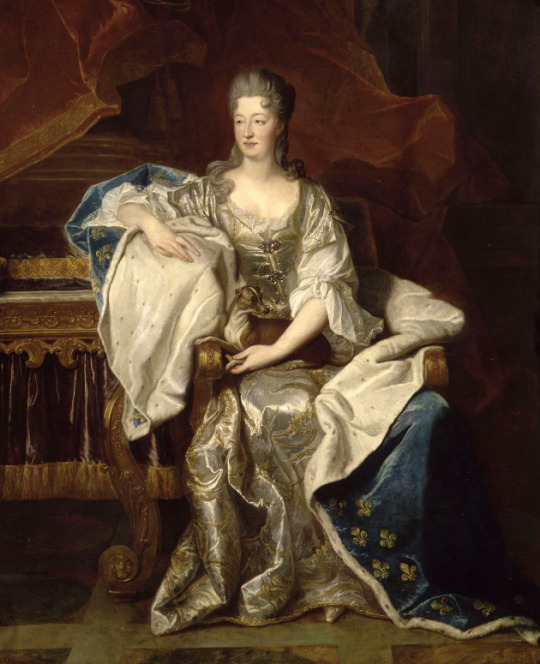
Marie-Anne de Bourbon (1666-1739). Atelier de Hyacinthe Rigaud.
#hyacinthe rigaud#royaume de france#maison de bourbon#marie anne de bourbon#mademoiselle de blois#blois#fils et filles de france#fille de france#royal bastards#fille légitimée#fils et filles de louis xiv#princesse de conti#bourbon conti#maison de conti#duchesse de La Vallière#duchesse de Vaujours#kingdom of france#house of bourbon
7 notes
·
View notes
Text


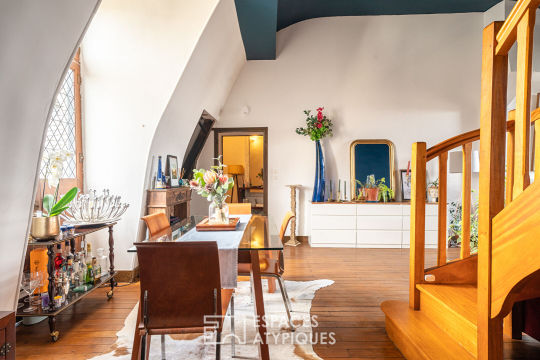

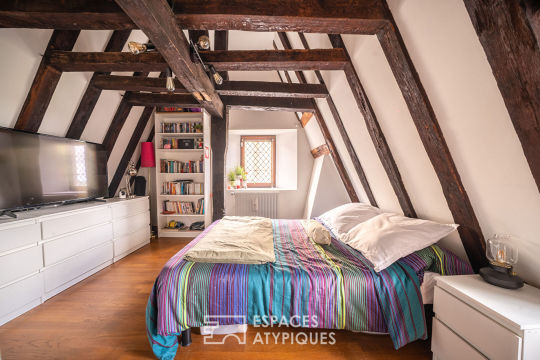

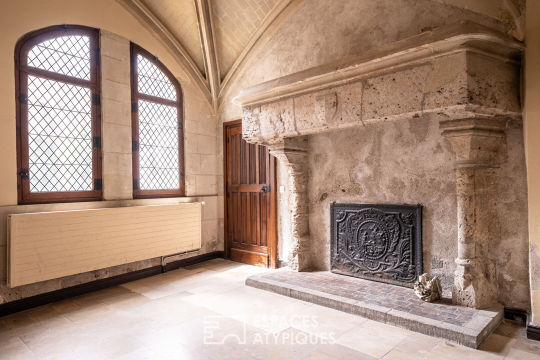

269,000 €
104 m² / 1119 ft²
Blois, Loir-et-Cher, Centre-Val de Loire, France.
#beautiful french house#beautiful apartment#apartment#flat#duplex#attic room#bedroom#stairs#blue#exposed beams#fireplace#mantelpiece#corridor#apartment in castle#castle#french#blois#loir-et-cher#centre#centre-val de loire#france
8 notes
·
View notes
Text
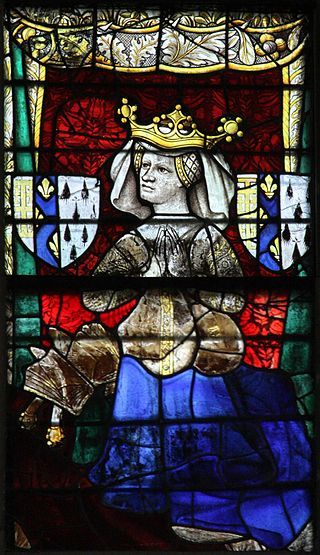
Marie of Blois (1345–1404) was a daughter of Joan of Penthièvre, Duchess of Brittany and Charles of Blois, Duke of Brittany. Through her marriage to Louis I, Duke of Anjou, she became Duchess of Anjou, Countess of Maine, Duchess of Touraine, titular Queen of Naples and Jerusalem and Countess of Provence.
3 notes
·
View notes
Text
« He’s very important to me, to us. But when we put shows together, it’s like putting a marriage together. Marriages can be difficult, especially when Ryan Condal is making creative decisions and adapting work. It can be fraught. Any marriage can get rocky. I would prefer everybody get along, of course. But with the creative process, we are always going to have bumps. That’s to be expected. »
— Casey Bloys, President & Head of Programming at HBO, quoted at Deadline about recent disagreements between George R.R. Martin and Ryan Condal.
Considering the number of ASoIaF weddings which didn't go well, maybe Casey should have chosen a more hopeful metaphor than marriage. 😱
I've been reluctant to comment about this. I'm sympathetic to GRRM as the creative force behind this universe. At the same time, George has been spreading himself rather thin. If he had decided to get involved in the actual production of House of the Dragon then it's unlikely there would have been such a dispute.
Let's leave it at that.
#game of thrones#house of the dragon#grrm#george r.r. martin#ryan condal#casey bloys#hbo#ród smoka#la maison du dragon#дім дракона#龙之家族#juego de tronos#a guerra dos tronos#a casa do dragão#la casa del dragón#آل التنين#ड्रैगन का घर#בית הדרקון#ejderha evi#haus des drachen#gia tộc rồng#ڈریگن ہاؤس#σπίτι του δράκου#하우스 오브 드래곤#lohikäärmeen talo#isang kanta ng yelo at apoy#হাউস অফ দ্য ড্রাগন#drakono namai#ハウス・オブ・ザ・ドラゴン#дом дракона
1 note
·
View note
Text
HBO Chief Casey Bloys Says “A Sameness Of Storytelling” Has Bogged Down Recent Superhero Outings – Deadline
"HBO and Max Content CEO Casey Bloys isn’t buying the notion that audiences have tired of major comic-book tentpoles, despite recent signs of a dropoff at the movie box office and some streaming outlets.
(That's what WBD is now hoping, after they helped to spread the toxic message, through trolls, of superhero fatigue, for years)
“I don’t know that it’s necessarily tentpole fatigue as much as it is a sameness of storytelling,” he said during a 2024 programming showcase in New York.
(What WB really objects to? Diversity, lack of realness. See Hyper violence, and clearly defined good & evil roles)
One of the shows to get significant billing at the event is The Penguin, which stars Colin Farrell in the title tole. The Batman helmer Matt Reeves is an executive producer of the Max Original, whose original spring 2024 launch will be delayed by the WGA and actors strikes..
(Another show surrounding a villain and using a mid actor)
DC is the main supplier of superhero fare on Max, but Bloys largely demurred during a press Q&A when asked for details about the state of the comic book corporate sibling’s production slate, including James Gunn’s new take on Superman. Thematically, though, he said DC definitely fits into his programming philosophy when it comes to keeping genre fare interesting.
(OF course he'd say that)
“I think the key, even within DC, is trying to tell different stories in different styles, to not try to do the same show over and over and over again,” he said. “I would say Peacemaker is a very different show tonally than The Penguin. So, there’s not a uniformity to the storytelling and I think that helps.”
Bloys volunteered a thought about a major rival. “Unfortunately, Marvel, as good as their shows are, there’s probably been a lot of them. That’s one of the advantages we have at Warner Bros. is it’s not just one set of stories. There’s a lot of stories you can go to.”
While Peacemaker, The Penguin and other shows in development are from the DC stable, Bloys said, the slate also features spinoffs from Warner Bros. films like It and Dune, with a Crazy Rich Asians spinoff also in the pipeline.
Let's see here:
Snyderverse, a mess
Wonder Woman 1984, flopped
The Flash, flopped
Black Adam, SO flopped
Aquaman, ABOUT to flop
In the tradition of sportsmanlike behavior in competition, Warner Bros Discovery would be booed off the court. Who the hell are they to give advice to Marvel?
I'd also like to bring up one more thing: Heath Ledger died as a result of playing the Joker. The psychological stress took such a toll on him, that that's when he went on prescriptions.
#Warner Bros Discovery#No morals and a house full of mid British actors#Casey Bloy#Doesn't want diversity#He wants hyper violence and sympathy for saud violence#WBD#DC Comics#HBO
0 notes
Text

#Lever House#Park Avenue#manhattan#new york#skyscraper#ezra stoller#Gordon Bunshaft#Natalie de Blois#SOM#skidmore owings & merrill
1 note
·
View note
Text
i'm bewildered by every generation of the british royal family that chooses to pick one of the super basic previously-used names for their heir presumptive. mix it up a little! make life easier for future schoolchildren!
#some good options include:#Alfred (as in Alfred the Great; downsides include having to figure out whether 21st century Al counts as the 1st or the 2nd)#Arthur (borderline religious statement. would probably cause a lot of drama)#Harold (implicit attempt to position current dynasty as rightful successors to the house of Godwin)#Richard (mildly basic but hasn't been used for an heir in 300 years. these guys seem to be unlucky so it would be funny)#Stephen (after Stephen of Blois. name your heir this to tell your relatives ''we're coming for your thrones'')
1 note
·
View note
Text
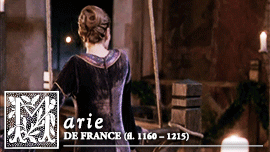

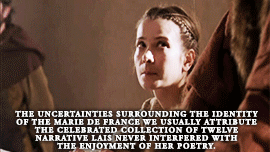

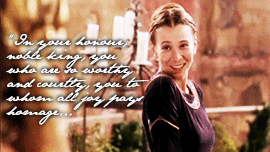
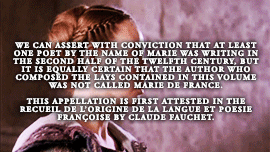
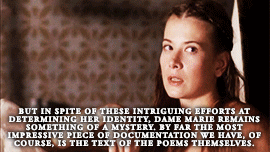
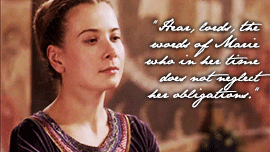
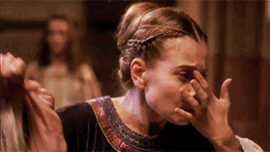

Medieval Women Week || Favorite woman writer ↬ Marie de France
Who was this versatile author, the first woman of her times to have written successfully in the vernacular? She was definitely not Marie de Champagne, daughter of Eleanor of Aquitaine and patroness of Chrétien de Troyes, as Winkler suggested. A tempting, but by no means fully convincing, identification is with Marie, abbess of Shaftesbury in Dorset, illegitimate daughter of Geoffrey Plantagenet and half-sister to Henry II. … A claim has been made, albeit somewhat thin, for Mary, abbess of Reading. This abbey was well known as a centre of literary activity and had in its possession the Harley manuscript containing, as we have seen, both the Fables and the Lais. There is no clear-cut reason why either work could not have been written by an abbess or a nun, and there is some slight evidence of experience of monastic life in Le Fresne, Yonec and Eliduc. But the prominence of the motif of adultery in the Lais (see also fables 44 and 45), Marie’s attitude towards the dissolution of marriage in Le Fresne and Eliduc, and her evident interest in the chivalric life suggest that these love poems were not written by someone steeped in ecclesiastical ideology. … Marie de France was certainly an educated lady of good family, who knew Latin well enough to have contemplated translating a Latin work into French (Lais, Prologue, vv. 28–32) and to have done so in the case of the Espurgatoire. She was obviously a good linguist and acquired a sound knowledge of English before translating the fables. She was also fully conversant with the life and aspirations of the nobility of her time. Her education could well have been obtained in a convent and her knowledge of court life from her upbringing and personal experiences in England. Was she Marie, the eighth child of Waleran de Meulan (also called Waleran de Beaumont), a member of one of the greatest of the Norman houses? Waleran’s fief was in the French Vexin, which would tally with Marie’s statement that she comes from France and explain her evident local knowledge of the town of Pitres in the Norman Vexin… Marie de Meulan married Hugh Talbot, baron of Cleuville, owner of lands in Herefordshire and Buckinghamshire, as well as in Normandy, and a member of a family prominent in several English counties including Devonshire, Gloucestershire and Kent. Marie’s father is an interesting figure – a loyal and courageous soldier, but also a well-educated man who may have written Latin verse. Moreover, several of the manuscripts of the Historia Regum Britanniae of Geoffrey of Monmouth are dedicated to him. It is tempting to think that his daughter may have known William of Gloucester, a possible Count William, as his father was also one of Geoffrey’s dedicatees. Marie de Meulan may, however, have been too young to be Marie de France, as her birth seems to date from the 1140s, perhaps as late as 1150. The most recent identification has been as Marie, countess of Boulogne after 1154, daughter of Stephen of Blois (King of England, 1135–54) and of Matilda of Boulogne. Educated in a convent, Marie de Boulogne became abbess of Romsey in Hampshire, but was removed from her convent by Henry II, who wanted to keep Boulogne in his sway. She was married off to Matthew of Flanders and thus became the sister-in-law of Hervé II, son of Guiomar of Léon... Eventually, at some time between 1168 and 1180, Marie de Boulogne returned to a convent, perhaps that of Sainte Austreberthe at Montreuil-sur-Mer in her own county. Her Count William could have been William of Mandeville, a crusade companion of Philip of Flanders, her husband’s brother. The ‘noble king’ would probably have been the Young King, as Philip and Matthew, originally supporters of Henry II, changed sides in 1173. Marie herself may have already been a supporter of the Young King, as in 1168 she sent Louis clandestine information about the secret negotiations between Henry and the Emperor Frederick. — The Lais of Marie de France translated with an introduction by Glyn S. Burgess and Keith Busby
#medievalwomenweek#marie de france#english history#french history#european history#women's history#medieval#history#nanshe's graphics
34 notes
·
View notes
Note
Aegon III and Jaehaera “healing together” would be like:
Jaehaera: I miss my father.
Aegon III, having a PTSD trigger: Well, I miss my mother! AND YOU KNOW WHO GRUESOMELY KILLED MY MOTHER WHILE I WAS WATCHING ?!
Jaehaera: And I miss my twin brother! AND YOU KNOW WHO SEND THE MEN WHO BEHEADED HIM IN FRONT OF ME & MY MOM ?!
Aegon III: Nothing would have happened if your grandmother didn’t usurped my mother and your uncle didn’t ruthlessly murdered my brother.
Their marriage would have been SOOO INCREDIBLY UGLY, BITTER, MISERABLE AND HOPELESS. That union never stood a chance. Aegon III spent about 3 years married to her and never made any attempt to befriend her and had more interactions with Unwin Peake’s daughter than her. They wouldn’t have any children, he’d abdicate in favor of Viserys if he didn’t marry Daenaera and then locked himself in a tower.
Yeah, I agree. I understand that the real English War of the Roses that war/sub-battles ended with a happier and successful marriage between the two warring houses of York and Lancaster so it seems that Aegon III and Jaehaera could have also had a great marriage--or at least a civil one with a lot of kids/heirs. However, though yes we had the structure of "one child of the two warring families marry for peace" of the War of Roses, the Dance was modeled and takes inspiration from the Anarchy, where Empress Matilda fought against her male cousin, Stephen of Blois, for the English throne. Where the conflict was strictly about who deserves the throne: the female declared heir or the eldest male relative? And who will obtain it, who fights for them, who suffers, etc.
Plus Henry VII of the Plantagenet branch of Tudor (through Jon of Gaunt) & Elizabeth of the house of York--the people who married each other while from the opposing houses after the Battle of Bosworth Field--were both relatively healthy adults AND Henry actually won the throne through his own leadership in battle after killing Richard II (her paternal uncle). The same uncle whose mainly held responsible for Elizabeth's younger brothers' disappearances. So Henry & Elizabeth had a way better beginning than Aegon III & Jaehaera.
Even with the Anarchy, GRRM doesn't transfer all of the events or major ones/results into his fiction. The conclusion of the anarchy was still a woman being passed over: Stephen won and got to rule but Empress Matilda's son--Henry Plantagenet-- was designated as the next to rule in the Treaty of Wallingford. But she wasn't brutally murdered in front of said son like Rhaenyra; yet despite Stephen's efforts his own sons never sat the throne like Aegon; yet the war ravaged England as the Dance did Westeros enough that in both the lords/barons sought peace above all AND Matilda lost the throne.
GRRM seemed to want to capture the sense of futility of the war's destruction (not its cause though, not absolutely) with how it should have never happened to begin with from a place of usurping a woman. There was no happy-dappy marriage or even an attempt at one in the real thing.
Jaehaera was made totally disadvantaged for a reason:
a) making her and Aegon both children in the aftermath of the war, controlled by ambitious adults still who do not have their best interests at heart makes to highlight theie vulnerability and the cause being misogyny and classism leading those in power to declare such wars
b) their parents fighting and destroying each other to the bitter end instead of what occurred in the actual Anarchy
c) the greens pushed for war under the principle of "men only" at the cost of its female members' mental and physical health or putting those in danger (mainly Helaena and Jaehaera) for the sake of power. Jaehaera could have grown up happier and for longer if her own father hadn't decided to calm down and not try to go after several of Rhaenyra's supporters in the way that he was planning to, nor should he have usurped his older sister. He shouldn't have celebrated Lucerys' murder at the feast he threw that was almost certainly part of the inspiration for Blood & Cheese whereby his oldest male heir was killed. His other male heir was put into danger when he, again, usurped Rhaenyra and led armies against her when she had been already declared and ACCEPTED as Viserys heir for years. All he had left was his daughter, but bc the whole point of his claim was "males only" AND he was himself an asshole, he decided to marry again to get another male heir. It was also Alicent who tried to intimidate or persuade her granddaughter to kill Aegon as if the child wasn't already scarred from war and mentally fragile from her disabilities so that she, Alicent, could get revenge against the already dead Rhaenyra. The greens, not the blacks or Rhaenyra, are the main ones at fault for Jaehaera's demise--her death is on their hands since every which way, they chose power over her.
#asoiaf asks to me#aegon iii#jaehaera targaryen#fire and blood characters#aegon iii's characterization#aegon iii and jaehaera#english history#medeival history#war of the roses#the anarchy#fiction vs reality#the dance of dragons#fire and blood writing#elizabeth of york#henry vii#asoiaf#fire and blood
57 notes
·
View notes
Text

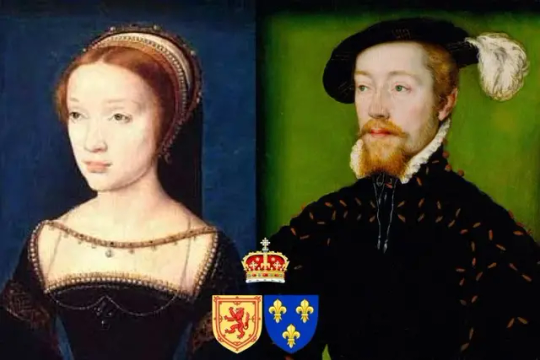
James V, King of Scots married Madeleine de Valois on January 1st 1537.
Madeleine of Valois was a French Princess who played a brief but significant role in European history as the first wife of James V of Scotland and, for a short time, the Queen of Scotland.
Madeleine’s poor health meant she died only six months after their wedding day – her short time as Consort led her to receive the nickname the ‘Summer Queen’ of Scots. Despite her short reign and tragically young death, Madeleine left both a direct and indirectly lasting impact on the tumultuous political landscape of Scotland.
Madeleine of Valois was the fifth child and third daughter of King Francis I and Claude, Duchess of Brittany.
She was born at the Château de Saint-Germain-en-Laye in France on 10 August 1520. Frail since birth, Madeleine was raised in the mild climate of the Loire Valley region to protect her from the cold.
When Madeleine was 3 years old, her mother died, and she, along with her younger sister Marguerite, was raised by their paternal aunt, Marguerite of Navarre. However, after their father remarried Eleanor of Austria, Madeleine became part of her household.
By the age of 16, Madeleine had developed tuberculosis, the same illness that likely claimed her mother’s life.
Madeleine’s marriage to James V was a result of diplomatic alliances between the Valois and Stuart dynasties.
The Treaty of Rouen, signed three years before Madeleine’s birth, aimed to strengthen the ‘Auld Alliance’ between France and Scotland after Scotland’s shattering defeat by England at the Battle of Flodden. One provision of the treaty was the marriage of a French princess to the Scottish king. King James V was only 5 years old at the time of the Treaty, thus negotiations on the marriage did not begin until 1530.
In April 1530, John Stewart, Duke of Albany, was appointed commissioner to finalise the royal marriage between James V and Madeleine – the French King Francis I’s eldest living daughter. However, due to Madeleine’s poor health, Francis proposed an alternative French bride, Mary of Bourbon, from his extended family, who was to be given a dowry as if she were the French king’s daughter.
James V agreed to marry Mary, and travelled to France in 1536 to meet her. However, upon his arrival, Mary didn’t appeal to him and instead he became enamoured with Madeleine, promptly asking her father Francis I for her hand in marriage. Initially, Francis I refused, fearing that Scotland’s climate would worsen Madeleine’s fragile health.
Smitten by 16 year old Madeleine’s delicate beauty, James V continued to press Francis I to permit the marriage. Madeleine also made her desire to marry James very obvious, thus despite his reservations, Francis I reluctantly granted them permission. The marriage contract was made at Blois, where Madeleine renounced her claims to the French throne, and Francis I provided a substantial dowry.
James V and Madeleine were married on 1 January 1537 at Notre Dane Cathedral in Paris – Madeleine was 16 and James was 30. The union was celebrated with four months of festivities, strengthening the bond between France and Scotland and fulfilling the terms of the Treaty of Rouen. Due to Madeleine’s health, their journey to Scotland was delayed until spring.
James and Madeleine eventually sailed for Scotland, arriving on 19 May 1537, yet by this time, Madeleine’s health had deteriorated further, and she was very unwell when the royal couple landed at Leith. Despite this, Madeleine is said to have kissed the ground upon arriving in her husband’s kingdom.
In preparation for her arrival, James had ordered improvements to Falkland Palace and the Chapel Royal, and was also in the process of building new tennis courts, and had added a French-style tower to the Palace of Holyrood House.
However, Madeleine fell seriously ill shortly after arriving in Scotland, possibly due to tuberculosis. She was bedridden and unable to fullfill her role as queen consort. Despite her illness, Madeleine’s presence brought a touch of French culture and refinement – known for her beauty, grace, and intelligence, Madeleine quickly became beloved by the Scottish court.
Although expressing some improvement in a letter to her father from Edinburgh on 8 June 1537, James V was concerned enough to also write to him requesting the physician Master Francisco to be sent. Madeleine later wrote that Francisco would only be needed to perfect her cure.
Plans were underway for Madeleine’s coronation as Queen of Scotland, yet her health continued to decline. A month later, she died of tuberculosis in her husband’s arms on 7 July 1537 at Holyrood Palace, aged 16 – just 6 months and 7 days after their wedding. She was interred in the Royal Chapel at Holyrood Abbey in Edinburgh, next to King James II of Scotland.
Her death left James V devastated, and plunged Scotland into mourning.
14 notes
·
View notes